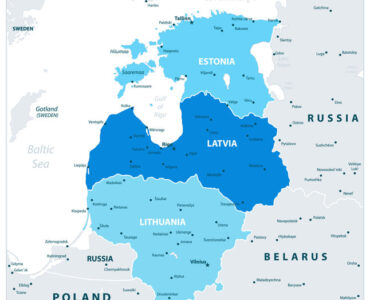Italian is the language of love, passion, music and culture. In addition to good food, art and fashion, the Italian language is one of the elements that characterize life in Italy and connects the country and its people. We’ll take you on a journey through the Italian language variants and tell you some interesting facts about the Italian language.
Key data on the standard language Italian: origin and distribution
Throughout its millennia-long history, the Italian peninsula has been traversed by many different peoples who brought their culture and language to Italy long before Italy existed as a unitary state. The completion of the unity of Italy did not happen until the late 1870s. And there was not yet a national language spoken by all Italians. The Italian writer and politician Massimo D’Azeglio expressed this succinctly in 1861 with a famous aphorism: L’Italia è fatta. Restano da fare gli italiani, which translates to We have made Italy. Now we must make Italians.
To assert that the Italian language did not exist at that time would be incorrect. There was a standard language – after all, the well-known Alessandro Manzoni novel The Betrothed which appeared around 1840 and is still taught in Italian schools today was written in Italian. But the standard Italian language was only spoken then by just over 2 million Italians, i.e. around 10% of the population at the time. The vast majority could only communicate in their own dialect – mostly verbally. These were often not variants of a common Italian language, but independent languages with their own grammar and vocabulary. Some of these variants differed greatly from the standard language, such as in the case of Neapolitan, Sicilian , and Friulian or Sardinian. Today, these languages are recognized regional languages that enjoy official status and coexist with the Italian language. But more on that later.
The Italian language as it existed in Manzoni’s day was basically the same as that spoken in the cultural city of Florence and derived from the 14th-century Tuscan literary language, the language of Dante’s Divine Comedy, derived. Based on this, the Italian language developed as we know it today. In the post-war period, the mass media, in particular the public broadcaster RAI made an important contribution to their dissemination – and thus to the creation of a national language and culture. RAI broadcast educational programs from his television studios in Turin and Rome, aimed at adult audiences and aimed at teaching a largely illiterate population to read and write in Italian.
Today, the Italian language has 67 million speakers in 26 countries, making it the 23rd most spoken language in the world. In Italy, 90.4% of the population speak it as their mother tongue. 45.9% of Italians over the age of 6 (26.3 million) also use the standard language in everyday life; 32.2% speak both Italian and their own language variant at home; 14% (8.7 million) only speak their own dialect at home. Regional language variants predominate among the older and less educated sections of the population: 32% of Italians over 75 years of age and 24.8% of those who only have secondary school qualifications state that they prefer their regional dialect to the standard language when communicating with family and friends (source : Istat, National Institute of Statistics).

Outside of Italy and its enclaves of San Marino and Vatican City, the Italian language is also spoken in Switzerland, Slovenia and Croatia. It is also spoken in 26 other countries which were settled by Italian migrants from the 1880s to the 1950s. In addition, the Italian language enjoys official status alongside the other official and national languages in Switzerland (Ticino and Graubünden), in the Slovenian communities around the city of Koper and in the Croatian region of Istria on the Adriatic coast.
Italian as a Pluricentric language: Italy vs. Switzerland
English, French, Spanish , Portuguese and German are pluricentric languages. This means that there are several standard variants of the language. For example, Federal German differs from the standard German language in Austria, Switzerland and South Tyrol in terms of spelling and vocabulary. Italian is also a pluricentric language, although Italian does not have as many standard variants as English and German.
In fact, the greatest divergences can be found when comparing Italy Italian and Swiss Italian. In the standard written language, these relate almost exclusively to the vocabulary, while the Italian and Swiss variants do not show any differences in terms of spelling. Above all, different words are used in Ticino in the institutional context than in Italy, as we are dealing with two countries with two different forms of government. In Switzerland, however, terms are also common that have an equivalent in Italy and are nevertheless different, which often causes confusion. The mobile phone is called in cellulare in Italy and mobile in Switzerland. And school grades are called voti in Italy and note in Switzerland . The list of differences is long.
Why do the Swiss name some things differently than the Italians?
This is due to the interference with the other languages of the Confederation, especially French and Swiss German. In everyday Swiss language, through language contact, there are also idioms that sound unusual or even wrong to the Italian: looking good in Ticino is guardare fuori bene, in Italy avere un bell’aspetto. The Swiss expression is a borrowed translation from German.
8.8% of the Swiss population speak Italian as their mother tongue, 33.7% speak it as a second or foreign language. The Italian-speaking target audience in Switzerland is therefore large. Advertising texts intended for the Italian-speaking market in Switzerland should therefore take these linguistic differences into account with regard to a targeted communication strategy. In addition to the language, there are other aspects that require localization of marketing texts, which primarily result from the fact that Switzerland has different regulations and a different currency than Italy and Germany. For purely informative texts, such as technical texts and operating instructions , it is usually not necessary to take Swiss language usage into account.
Diglossia vs. bilingualism, dialects vs. regional languages
Even if the majority of the Italian population today uses the standard language with a high level of competence and often prefers it to the regional variant, the use of dialects in Italy is far from extinct. And that’s a good thing, because the many dialects contribute to the diversity of the Italian language and are an expression of the country’s culture. Sometimes, for old recipes or traditions that come from rural areas of Italy, the standard language term just doesn’t exist. Since Italians are forced to fall back on the dialect. Which also means that they can use both the standard language and their own local variant competently and in a context-specific manner. However, since only a few variants have the status of an independent or official language, one often speaks of a situation of diglossia . One speaks of bilingualism when the two languages have the same status and thus fulfill the same functions, both in private and in public. This is the case in Italy. For example, in the autonomous regions of South Tyrol (Italian/German/Ladin), Aosta Valley (Italian/French) and Friuli-Venezia Giulia (Italian/Slovene), where the other non-Italian language has the status of an official language and exists alongside Italian.

When Italian native speakers refer to the local language variant that they speak in addition to the standard language, they usually speak indiscriminately of a dialect, without specifying whether it is a dialect of Italian in the true sense or a regional variant. As already mentioned, the standard Italian language as we know today developed from the Tuscan literary language of the 19th century. Accordingly, only those variants that are spoken in central Italy (Tuscany, Lazio, Umbria, Marche) are to be regarded as dialects of Italian. To the south, Neapolitan, spoken in its variants in the Campania region, in Abruzzo, in Puglia and in Basilicata, like Sicilian and Sardinian, they were independent languages with their own grammar and vocabulary, independent of the Tuscan literary language from which Italian was derived. In the north, Piedmontese, Ligurian, Lombard, Emilian, Venetic and Friulian are also distinct languages with local variants.
Language variants vs. default language: status and usage
The majority of the dialects of Italian and the regional languages spoken in Italy have no official status. The extent of their use varies depending on social and individual factors, but is limited to oral communication. Additionally, some regions in Italy enjoy special autonomy from the Italian state, where the respective regional language is recognized, protected and promoted as a cultural asset. Examples include Friuli-Venezia Giulia, Sicily and Sardinia. In this respect, foreign-language content that is brought to the Italian market for advertising or information purposes can be translated into the standard language without any problems. Texts that must comply with Italian legislation, such as contracts or declarations of conformity of goods and products, must in any case be translated into standard Italian, which is the official state language.
Language variants as culture bearers
Even if they are not official languages and are therefore subject to the standard language in public, the dialects of Italian and the regional languages, which are spoken in Italy in their variants, fulfill an important function as carriers of the culture of the various regions of Italy – also across beyond the borders of Italy.
Since they arose long before the standard language, regional languages such as Neapolitan and Sicilian have an ancient literary tradition that is today valued and protected as a cultural asset. Music and theater works in regional languages also have a longstanding tradition in Italy. For example: the famous comedies by Carlo Goldoni are in the Venetian language.
Today, dialects and regional languages are mainly used in contemporary film production. Film adaptations of the novels by Roberto Saviano’s Gomorrah and Elena Ferrante ‘s My Brilliant Friend , set in Naples, and the television series Strappare lungo i bordi by cartoonist Zerocalcare in Roman dialect enjoyed international success.
A complex language universe
Within Italy there are as many dialects as there are cities. To be more precise, however, many are variants of the various regional languages spoken in Italy, which have even older roots than today’s standard language. Nevertheless, its use is limited to the spoken language, which is why we are not talking about real bilingualism here, but about diglossia. Italian is the official language in both the north and south of the country, which is why foreign-language content that advertises goods and services in the Italian market can be translated into the Italian language without attention to local flavors – contracts and other legally valid texts must be written in Italian anyway. Bilingualism in the true sense of the word only exists in Italy in the autonomous regions of South Tyrol, Aosta Valley and Friuli-Venezia Giulia. There, the other, non-Italian language is equated with Italian. In addition, most young Italians up to the age of 34 have basic to good knowledge of one or more foreign languages: 48.1% know English, 29.5% French and 11.1% Spanish.





